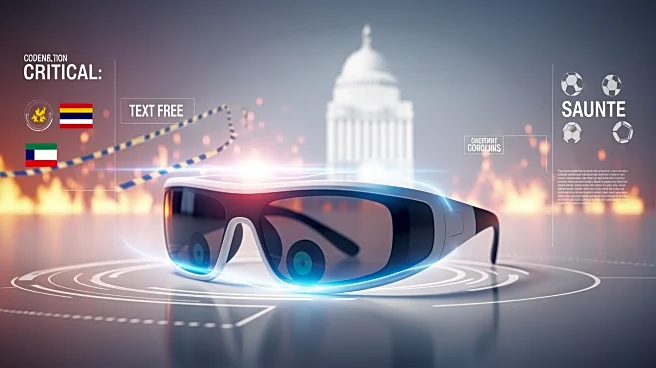What's Happening?
Meta and Snap are spearheading significant shifts in augmented reality (AR) technology, with Meta unveiling smart glasses featuring built-in displays and Snap planning lightweight consumer AR glasses for
2026. These developments are part of a broader trend where AR is transitioning from experimental demos to practical, everyday applications. Meta's smart glasses, revealed in September 2025, offer app-driven overlays, while Snap's upcoming glasses focus on social-first experiences with camera effects and location-based overlays. Additionally, WebXR updates are making AR content more accessible, allowing experiences to run without native installs.
Why It's Important?
These advancements in AR technology could reshape consumer tech spending and influence buyer choices significantly. Meta's smart glasses aim to provide visible AR experiences without the need for a smartphone, potentially appealing to consumers seeking convenience and integration. Snap's focus on social AR experiences could attract users interested in casual, everyday use of AR technology. The increased accessibility of AR content through WebXR could democratize the technology, allowing more creators and users to engage with AR without barriers. As AR becomes more integrated into daily life, it could drive innovation and competition among tech companies, influencing market dynamics and consumer preferences.
What's Next?
The introduction of these AR products is likely to lead to a fragmentation in consumer choices, with some opting for premium displays and others preferring lightweight social frames. Developers will need to choose platforms strategically, while retailers may need to prepare for AR shopping layers. The success of these products could prompt further investment and development in AR technology, potentially leading to new applications and use cases across various industries. As AR technology evolves, stakeholders will need to navigate challenges related to privacy, regulation, and consumer adoption.
Beyond the Headlines
The growing use of AR technology raises ethical and privacy concerns, particularly as it becomes more integrated into everyday life. Companies will need to address these issues to ensure compliance with regulations and maintain consumer trust. Additionally, the widespread adoption of AR could lead to changes in social interactions and cultural dynamics, as people increasingly engage with digital overlays and augmented experiences. The long-term impact of these shifts could influence how society interacts with technology and perceives reality.












